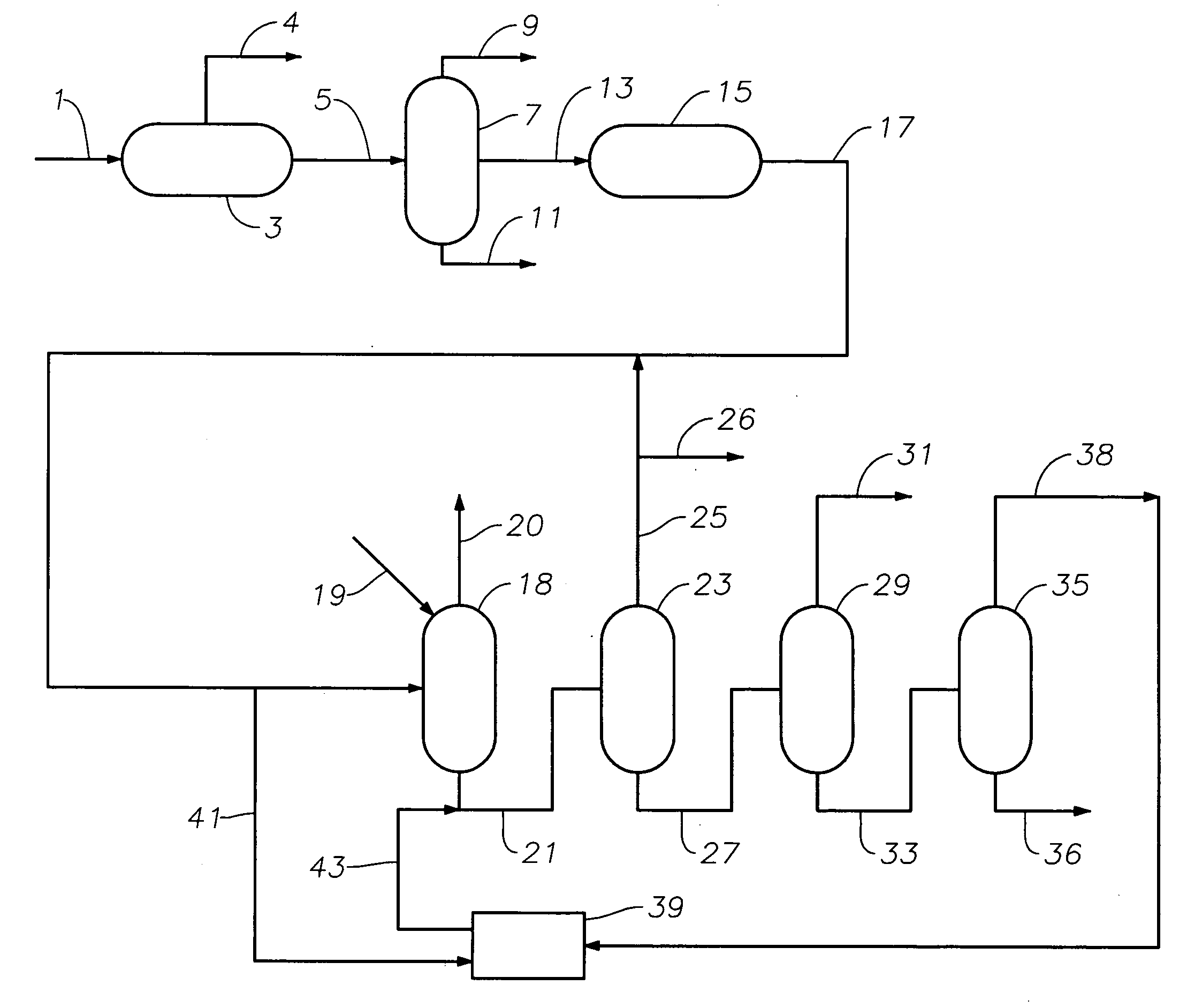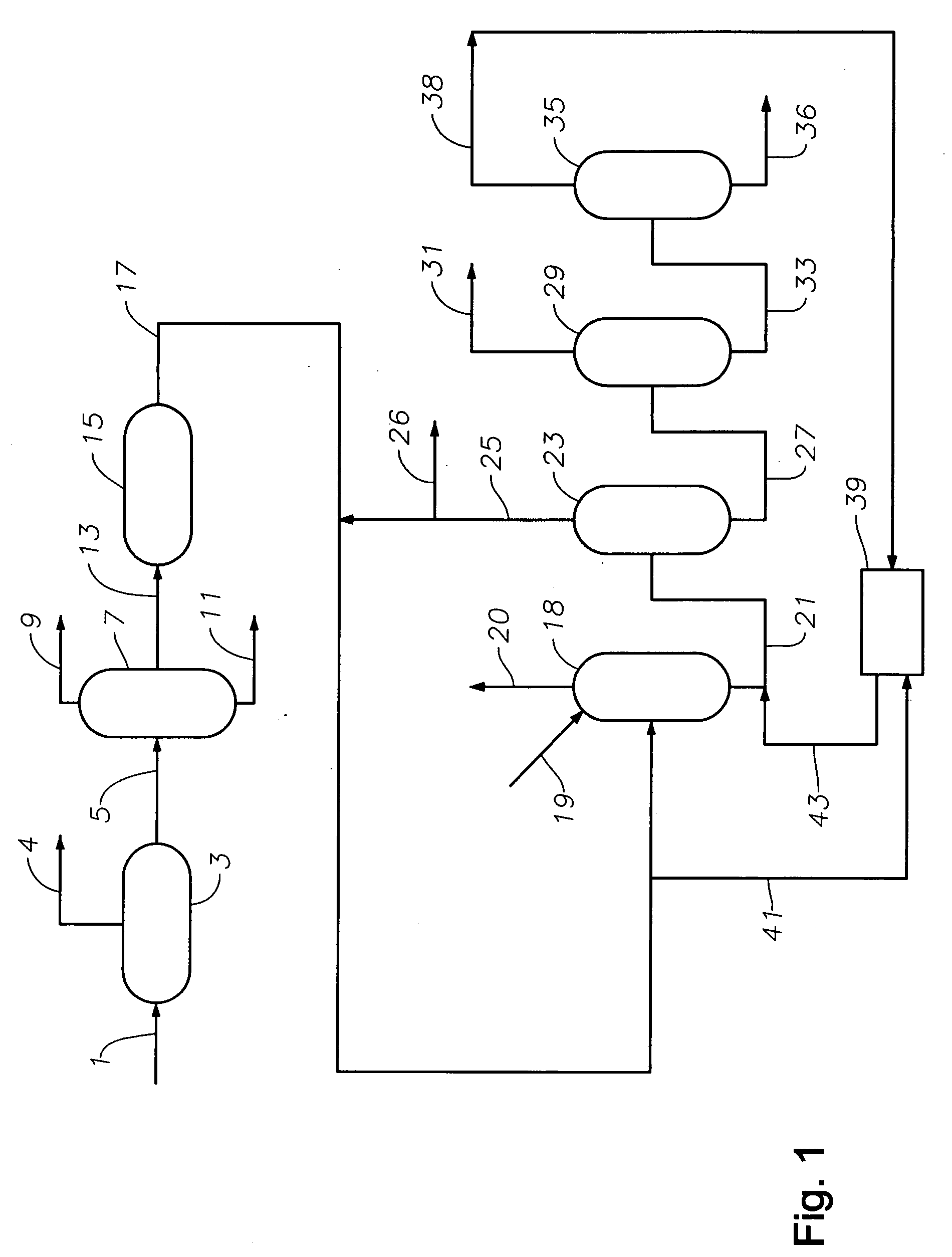Production of high purity ethylbenzene from non-extracted feed and non-extracted reformate useful therein
a technology of ethylbenzene and feed, which is applied in the direction of naphtha reforming, chemistry apparatus and processes, organic chemistry, etc., can solve the problems of ethylbenzene coboilers, less than desirable purity of ethylbenzene, and difficult removal of ethylbenzene products
- Summary
- Abstract
- Description
- Claims
- Application Information
AI Technical Summary
Benefits of technology
Problems solved by technology
Method used
Image
Examples
example
[0140]Tests were carried out using a feed that comprised 49.5 weight percent benzene and 49.5 percent by weight of 2,3-dimethylpentane (remainder of the feed contained other reformate produced hydrocarbons) by passing the feed over a MCM-22 catalyst. The conditions of the first test (Test A) included a temperature from 176.7° C. to 204.4° C., a pressure of 1.72 MPa-a, ethylene to benzene mole ratio of 0.5:1, and a WHSV based on total ethylene over total catalyst for overall reactor between 2 to 10 hr1. The conditions in the second test (Test B) included a temperature from 176.7° C. to 204.4° C., a pressure of 1.72 MPa-a, ethylene to benzene mole ratio of 1:1, and a WHSV based on total ethylene over total catalyst for overall reactor between 2 to 10 hr1. Results of the tests are in FIG. 4 through FIG. 6.
[0141]FIG. 4 is a plot of impurities produced in the production of ethylbenzene vis à vis temperature and ethylene to benzene ratio and shows that the practice of the present disclosu...
PUM
| Property | Measurement | Unit |
|---|---|---|
| boiling point | aaaaa | aaaaa |
| temperature | aaaaa | aaaaa |
| temperature | aaaaa | aaaaa |
Abstract
Description
Claims
Application Information
 Login to View More
Login to View More - R&D
- Intellectual Property
- Life Sciences
- Materials
- Tech Scout
- Unparalleled Data Quality
- Higher Quality Content
- 60% Fewer Hallucinations
Browse by: Latest US Patents, China's latest patents, Technical Efficacy Thesaurus, Application Domain, Technology Topic, Popular Technical Reports.
© 2025 PatSnap. All rights reserved.Legal|Privacy policy|Modern Slavery Act Transparency Statement|Sitemap|About US| Contact US: help@patsnap.com



